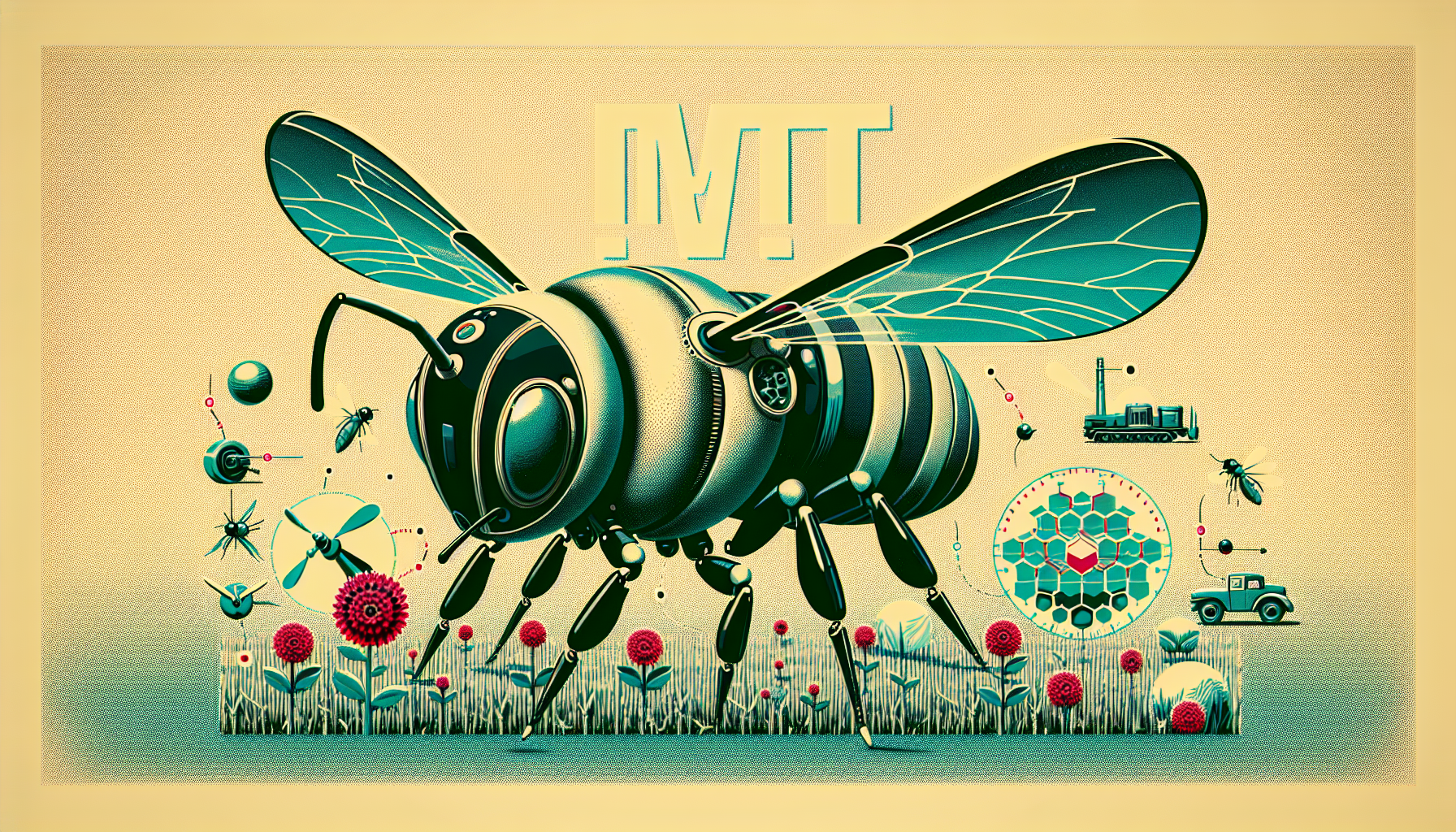In a remarkable fusion of technology and nature, the Massachusetts Institute of Technology (MIT) has pioneered a new breed of tiny robots poised to transform agriculture. Inspired by the elegance and efficiency of natural pollinators like bees, these insect-scale microrobots offer a promising new path for mechanical pollination.
## Design and Capabilities
Guided by the expertise of Kevin Chen, an associate professor at MIT’s Department of Electrical Engineering and Computer Science, these robotic marvels weigh less than a paperclip but pack a punch in performance, outpacing previous models in speed and agility. Capable of complex aerial maneuvers, these microrobots perform stunning feats like double body flips at dizzying rotational speeds that surpass both the fastest flying insects and larger flying devices.
With a leap forward in design, these delicate machines boast a lift-to-weight ratio of 2.2 and can ascend vertically at speeds of up to 100 centimeters per second. Hovering with precision for up to 1,000 seconds, these robots maintain their accuracy for durations far exceeding what was possible before.
## Advanced Mechanics and Materials
Several key innovations in design fuel this impressive performance. The team at MIT has crafted sophisticated transmissions that link the wings to their driving force, reducing mechanical strain and amplifying control capabilities threefold. The actuators, crafted from layers of elastomer paired with thin carbon nanotube electrodes, are engineered to swiftly stretch and contract, generating the necessary power to make the wings flap.
A meticulous fabrication process, involving a multistep laser-cutting technique, ensures precise alignment of wing hinges. This level of precision is crucial; even the slightest misalignment could hinder wing functionality.
## Potential Applications in Agriculture
These robotic insects aren’t just an engineering triumph—they represent a new frontier for sustainable agriculture. They’re designed to handle pollination within controlled environments, like multi-layered warehouses, where they could enhance crop yields with less environmental impact than traditional farming techniques. By mimicking the adeptness of natural pollinators, these robots offer a potential solution to the declining numbers of bees and other pollinators, a critical challenge in today’s agricultural world.
## Future Directions
Although these robots have yet to fully match the natural stamina and speed of bees, they’re rapidly advancing toward this goal. Future research endeavors aim to exceed flight times of 10,000 seconds and refine their ability to land and lift off precisely from the center of flowers. The ultimate vision is to outfit these robots with sensors, batteries, and computing power to enable them to navigate autonomously beyond the lab.
## Comparison with Other Pollination Robots
While MIT’s robotic insects showcase unmatched aerial prowess, other innovations, such as West Virginia University’s “StickBug,” approach mechanical pollination from a different angle. The StickBug is a six-armed robot designed for precision pollination, equipped to autonomously navigate and map greenhouse environments. Its contact-based pollination system and Kiwi drive allow it to reach flowers in challenging positions. While it excels in precision, MIT’s tiny flyers outshine in agility and sustained flight.
## Conclusion
The creation of these fast, agile robotic insects signals a transformative era for agriculture, especially in the realm of mechanical pollination. As this technology evolves, it promises to revolutionize the production of fruits and vegetables, making farming more efficient, sustainable, and resilient amidst the decline of natural pollinator populations. This breakthrough effort marries the intricacies of engineering with the wonders of nature, envisioning a future where technology and ecology work hand in hand to feed the world.

Leave a Reply